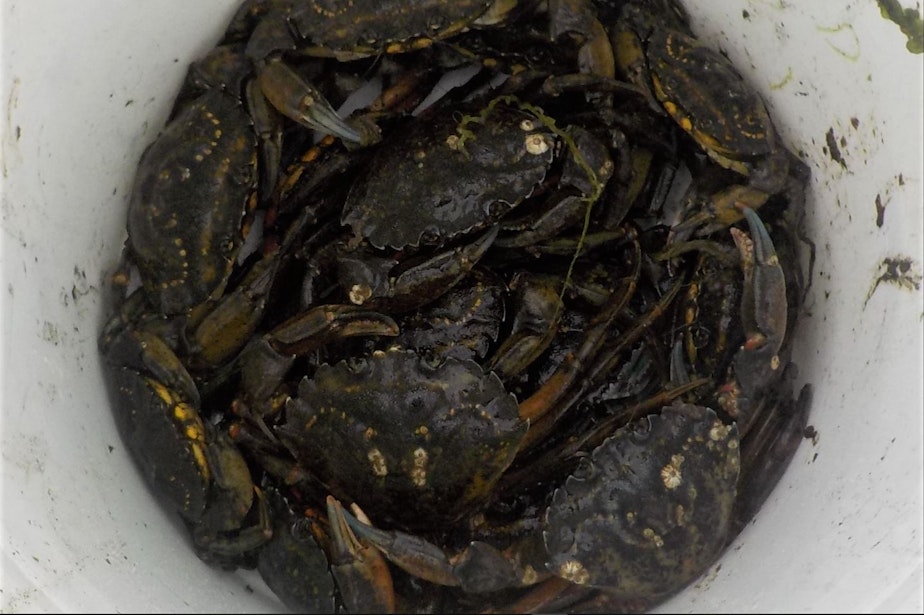Thousands of these small green crabs are invading Puget Sound shores
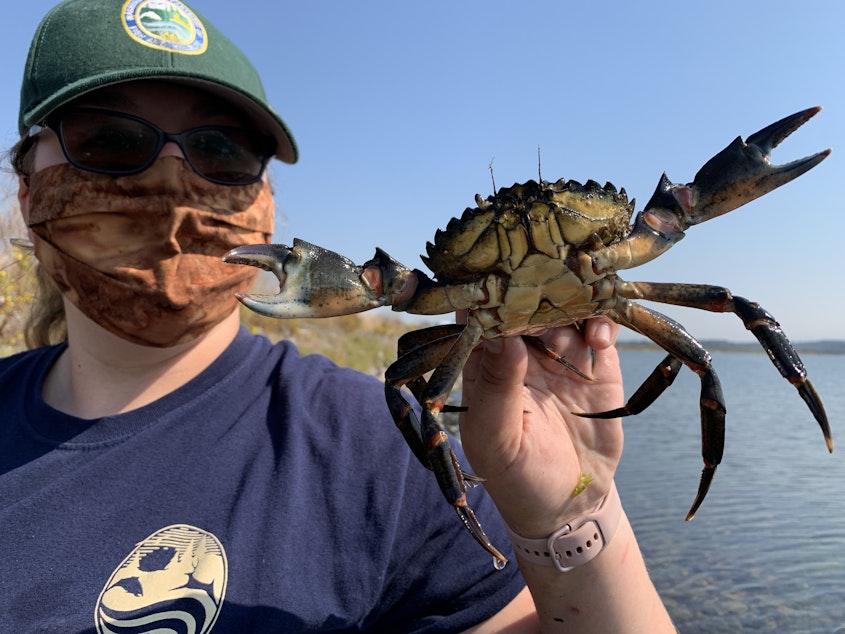
Since April, Lummi Nation natural resources staff have headed into the mud, week after week, to capture European green crabs in small metal traps.
It’s part of an intensive effort to eradicate the invasive crabs before they take a toll on native Dungeness crabs and other shellfish that the Lummi people rely on.
Sponsored
By November, Lummi crews had trapped more than 2,600 of the unwelcome invertebrates on the tribe's reservation west of Bellingham, up from just 64 the year before, and more than anywhere in Washington state.
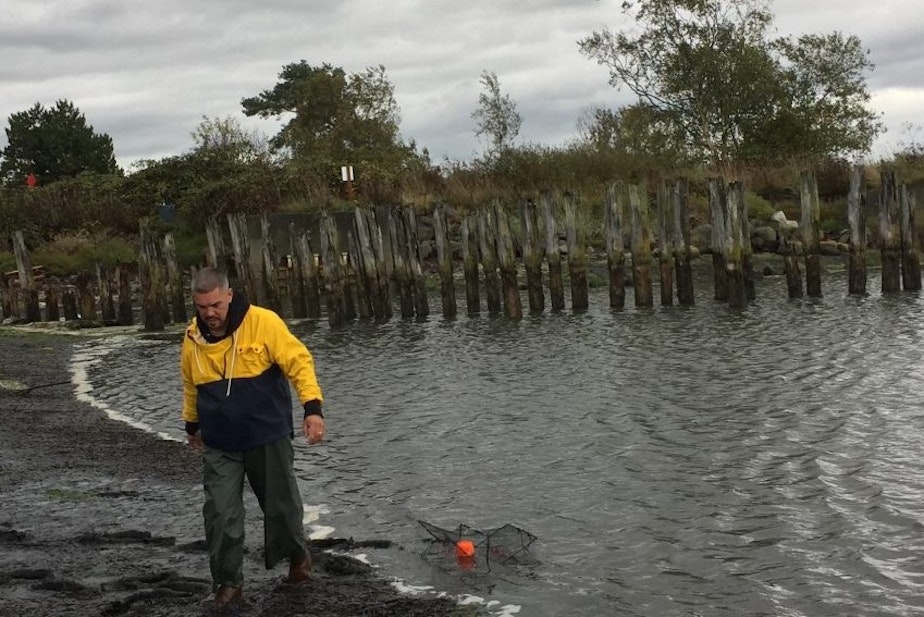
“We're doing everything we can to stop this invasive species before it starts to affect some of our important fisheries,” Lummi biologist Nick Jefferson said. “Green crabs have been known to wipe out whole shellfish beds.”
Though the crabs only get to be about four inches wide, the little green invaders are considered one of the world’s worst invasive species.
“They're quite voracious predators,” said Makah Tribe ecologist Adrianne Akmajian.
Sponsored
They arrived on Washington’s outer coast by 1998, but before this year, European green crabs had been found in small numbers in Puget Sound.
They can do all sorts of damage when they sink their claws into a new territory.
Jefferson said the crabs’ burrowing can turn whole beaches into Swiss cheese and leave shorelines prone to erosion.
“They can destroy entire eelgrass beds,” critical habitat for crabs and fish alike, Jefferson said.
“They're just so good at invading new areas,” Akmajian said. “They're really tolerant of a wide range of temperatures, a wide range of salinity. That's why we can find them upriver and in the ocean.”
Sponsored

In one season, a female green crab can produce 185,000 eggs, which turn into plankton to be carried far and wide by ocean currents.
The tenacious little adults can survive five days out of the water.
The green crabs have flourished in the sheltered waters of a large saltwater pond cordoned off from Lummi Bay by a curving, three-mile-long seawall.
“It's protected. It has lots of food for them, not a lot of predators for them in there,” Jefferson said of the pond. “Their numbers are able to grow really fast.”
Sponsored
The Lummi Nation built the 750-acre sea pond half a century ago for raising clams, oysters and salmon, but it’s not used for much anymore.
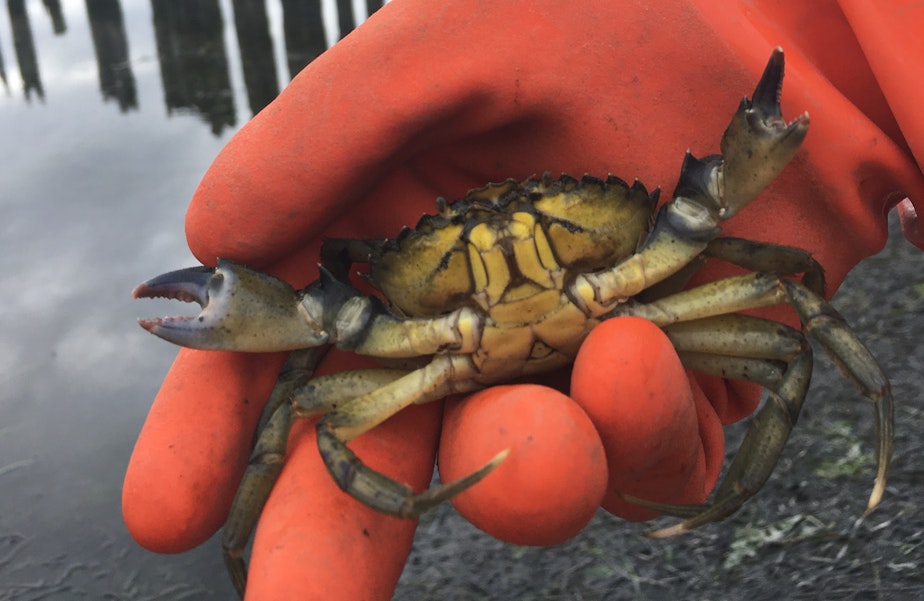
“It’s artificial, a little bit of a fluke,” said ecologist Emily Grason with Washington Sea Grant’s “crab team.” “It’s not representative of the Salish Sea.”
“The nice thing, though, is it’s a relatively contained area on which trapping can be focused and have a large impact on decreasing the population,” Grason said.
Sponsored
With the trapping season over, Jefferson said Lummi officials are now brainstorming how to make the pond less welcoming to the crabs.

Trapping efforts elsewhere in northern Puget Sound this year turned up much smaller numbers of the most-wanted crustaceans.
State officials found 250 in Drayton Harbor near the Canadian border at Blaine, while shellfish growers in Samish Bay found 80.
No green crabs have ever been observed in Puget Sound south of Whidbey Island.
On the outer coast, at the tip of the Olympic Peninsula, Makah Tribe technicians caught 1,000 green crabs in 2020, down from 1,400 the year before.
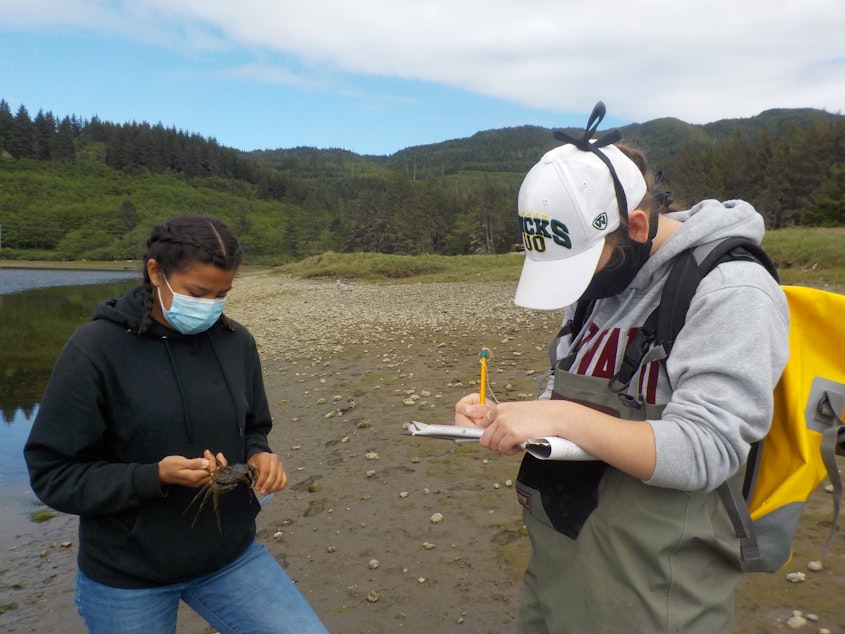
“Each year, we come back, and there are still plenty of crabs. And at the end of each season, we're often seeing lots of small crabs,” Akmajian said.
Trapping efforts on the Makah reservation and elsewhere were constrained by the safety demands of the Covid-19 pandemic. The Makah Tribe closed its reservation to outsiders, even volunteers helping the tribe fend off European crabs.
Still, Grason said hired and volunteer crab-busters managed to set more traps in Washington's inland waters this year than ever before.
Bays in southwest Washington, where the adaptable arthropods first landed after spreading north from San Francisco Bay, are heavily infested.
“In Willapa Bay and Grays Harbor, we found European green crabs in every single place we looked for them,” Grason said.
Trappers hauled in nearly 1,000 crabs in Willapa Bay and 640 in Grays Harbor this year.
Thousands of the crabs have also been found just across the watery border from Washington on Vancouver Island, where the Coastal Restoration Society says the crab invasion is “out of control.”
“The entire west coast of Vancouver Island is a hot spot,” said fishing lodge owner Ryan Chamberland of Sooke, British Columbia.
Chamberland said he has trapped 4,200 green crabs over the past 15 months in the Sooke Basin, a sheltered inlet at the southern tip of Vancouver Island.
Chamberland said he’s trying to develop a green-crab-based product to provide an economic incentive for people to target the unwelcome invaders.
“The crabs do make great fertilizer and food,” he said.
Though the diminutive crabs are sometimes fried or used for soup stock in their native Europe, Chamberland said he’s had little interest so far in turning them into a new West Coast seafood offering.
